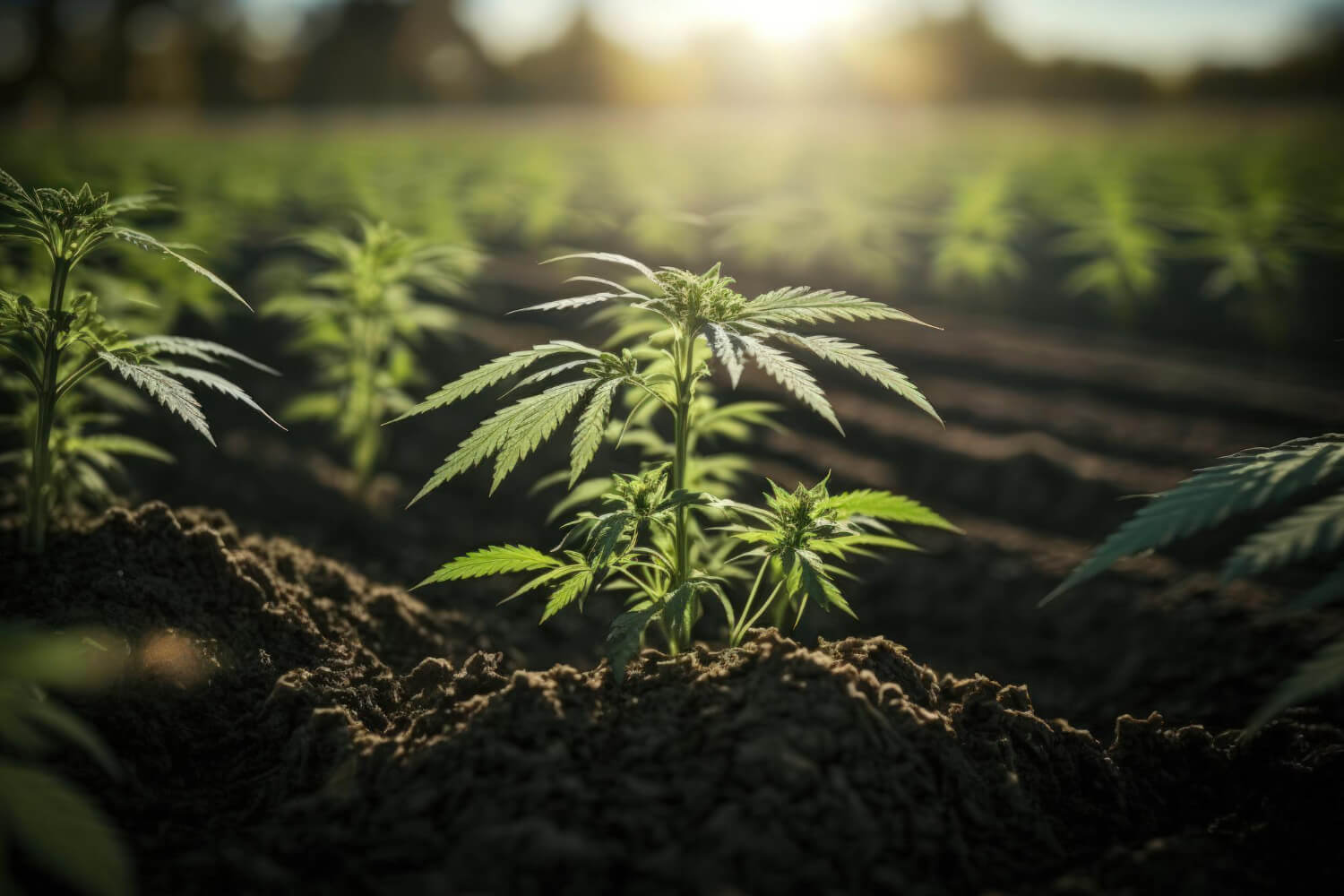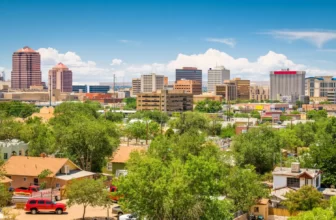It’s pretty safe to say that more people are using cannabis around the world today than at any other point in history. This growing demand, along with the elimination of harsh growing restrictions in areas viable to growing cannabis outside, has prompted a shift towards large-scale outdoor cultivation. While large-scale outdoor cultivation is on the rise and has many benefits, from cost efficiency to sustainability to addressing pollination concerns, there are still several challenges that need to be solved for it to truly thrive.
Growing Cannabis Outdoors: Differences with Other Methods
Growing cannabis outdoors allows cultivators to take advantage of various resources, from sunlight to rain, which significantly reduces operational costs and is generally more environmentally friendly vs. indoor operations. Outdoor cultivation is easily scalable for larger operations, as there is no need for extensive infrastructure. This makes it a practical choice for large commercial cannabis farming.
Those interested in setting up a large outdoor cannabis farm will have unique challenges they will have to contend with. For example, outdoor cultivation may not provide the level of environmental control required for specific strains or breeding programs.
Site Selection and Preparation
With phytoremediation abilities that give cannabis plants the ability to clean up contaminated soils along with pollination concerns, choosing an ideal spot is even more essential when compared to most other crops. It’s important to remember that each state has its own rules for selecting a site. Also, just because you get a zoning permit doesn’t mean the community will accept it.
Climate
Cannabis plants, especially hybrids and stativas, thrive in high-light environments and do best when grown in full sun. For many strains, 40-50 DLI is the ideal range for flowering cannabis. Depending on the hours of light your region sees, your plants may not start flowering until August. For example, Columbia, Missouri, starts August off with 14 hours of daylight but is already experiencing a notable decline in sunlight by only providing a DLI of 33 on average.
Soil Quality
More and more consumers understand the importance of regular soil testing due to phytoremediation concerns. Then, while incredibly durable, cannabis plants don’t naturally want to put out the amount of flower we want. As such, when looking to maximize yield and quality, we need to baby our plants by providing them with pH-balanced, nutrient-rich, and well-draining soil.
Accessibility
You want to select a location that is accessible for you but not for outsiders. Choose a location that is easily accessible for transportation of supplies, products, and heavy machinery. Accessibility to water sources is also crucial for irrigation.
Strain Selection for Large-Scale Cultivation
Selecting the right cannabis strains for large-scale outdoor cultivation is crucial for maximizing yield, ensuring resilience, and meeting market demand. Select strains that grow well in your climate and narrow down the group by eliminating strains that fail to meet unique factors in your outdoor setup, e.g., genetic diversity, flowering time, and disease resistance. I greatly encourage you to work with local nurseries to find or develop cultivars that express phenotypes for your specific microclimate.
Vegetative Period: Paying attention to the vegetative stage — where the plant will focus on growing big and tall — and the hours of light the plants receive is crucial. Places like Michigan get a few more weeks to veg their plants compared to places like Louisiana, allowing them to grow bigger plants.
Flowering Period: In most cases, especially in the middle-top of the United States, hybrids and particularly indicas, due well thanks to faster flowering times. Where these strains often flower in 8-10 weeks, sativas can go 16+ weeks until harvestable.
Give The People What They Want: Another great way to go about selecting the perfect strain is by researching market demand. Despite increasing chatter that THC levels have gotten too high for many old-school tokers, many consumers are still chasing flowers with the highest percentages of THC.
Advanced Planting Techniques
Efficient planting strategies are crucial for maximizing sunlight exposure, promoting air circulation, and optimizing overall cannabis cultivation, all of which will promote higher-quality flowers.
Currently, row cropping is the most popular outdoor cultivation method, where plants are arranged in rows that make fertigation and pest control easier to maintain. How far you should space plants depends on the strains’ unique growing patterns, the degree you incorporate plant training, and the time plants spend in their vegetative stage. Experts generally agree that when in the Northern Hemisphere, rows should run north-south to maximize sunlight exposure, however, running them east-west can increase protection from frost.
When creating a large-scale operation, consider mechanical transplanters, which are machines that transplant seedlings and clones into the field, along with trimming machines that will save you time and labor when harvesting. Additionally, GPS-guided machinery can help guide you in optimizing row spacing and plant density.
Integrated Pest Management and Disease Control
You can incorporate several effective strategies for pest management and disease control.
Regular Monitoring
First, you should establish a routine monitoring program to regularly inspect plants for signs of pests, diseases, or environmental stress that relies on a combination of visual cues and monitoring tools. Always quarantine new plants while ensuring your nursery is providing certification that confirms their crops are clean.
Biological Control Methods
Introducing predatory insects like ladybugs can keep your plants safe from pests. A single ladybug can eat up to 50 aphids a day, which is one of the most common cannabis pests.
Organic Pest Control
Microscopic and beneficial nematodes can protect against fungus gnats, root aphids, and thrips that like to dwell near the soil surface. Neem oil is a natural insecticide and fungicide and can be applied to the entire plant. Last, diatomaceous earth is an organic abrasive powder that can take care of ants and mites by destroying their exoskeletons.
Sustainable Measures
All cultivators should be working to make cannabis cultivation a sustainable practice, and selective breeding for natural resistance, water and fertilizer management, and cover/companion crops can help with that.

Irrigation and Nutrient Management
As with many crops in the agriculture industry, fertilizer runoff and water management are big problems with indoor and outdoor cannabis cultivation. Many of us grew up with the notion that cannabis requires significant amounts of water and fertilizer — in particular during the bloom stage, where flushing and phosphorus-based fertilizers are common. Many of us took these practices to heart and still incorporate them today, despite evidence pointing in the other direction.
For large-scale outdoor operations, setting up a drip irrigation system is a great way to combat these pollution issues. This system minimizes water wastage by precisely controlling the amount of water each plant receives. This system should be combined with regular soil testing and leaf-tissue samples to ensure plants are receiving optimal amounts of nutrients. Thanks to Bernstein Et al., we know that under-overfeeding plants will result in growth retardation. But when all plants are experiencing this issue, it can be difficult to visually see in the early stages.
Harvesting and Post-Harvest Processing
When it comes time to harvest your crops, you’ll need to decide whether it’s more efficient to harvest all at once or harvest the mature buds selectively. When you harvest the entire plant at once, it’s easier to bring in machinery that will save a lot of time and effort. However, by harvesting all at once, you will harvest some immature buds that won’t be as potent or dense as the mature buds, diminishing their sellability. You can combat that by exploring potential revenue avenues for the immature buds, such as selling them in bulk to edible manufacturers.
While the use of trimming machines will result in a loss of some trichomes while giving the buds an appearance that doesn’t compete with hand-trimmed cannabis, trimming machines are pretty much essential in large-scale operations. You can combat this with gentle trimming machines. However, point black, trimming machines will significantly reduce labor cost/time and are standard in this industry for this reason. After drying, cannabis flowers should be secured in jars or bags for curing and kept in a cool and dark space with an implemented climate control system.
Sustainability and Environmental Considerations
Cannabis has the potential to be one of the leading crops as we move forward to combat climate change. However, as it stands, the majority of cannabis operations are doing more damage to the environment than good. Now, indoor operations are at much of the fault for this, but outdoor cultivators don’t get off scot-free.
I discussed how a drip irrigation system can promote water conservation along with regular soil testing and leaf tissue samples to ensure plants aren’t receiving too much fertilizer. Cultivators can further extend this by setting up systems to capture and recycle water runoff. I also mentioned bringing in natural pest control, which can be combined with companion planting. I like these organic options vs. organic fertilizers, which are often abused or not properly implemented.
All cannabis cultivators should be working on controlling VOC emissions during cannabis production. High levels of VOC pose a threat to both workers’ health and, if released into the air, can contribute to ground ozone levels.
Final Thoughts
Growing cannabis outdoors introduces unique situations that indoor operations won’t need to largely deal with, such as a greater focus on strain selection and regular soil testing. However, by taking advantage of the many resources in their natural environment, outdoor operations are easier to scale while offering a more environmentally friendly way to grow cannabis. When working on selecting a site or setting into place a pest management and disease program, I encourage you to keep sustainability and responsible farming practices in mind.





